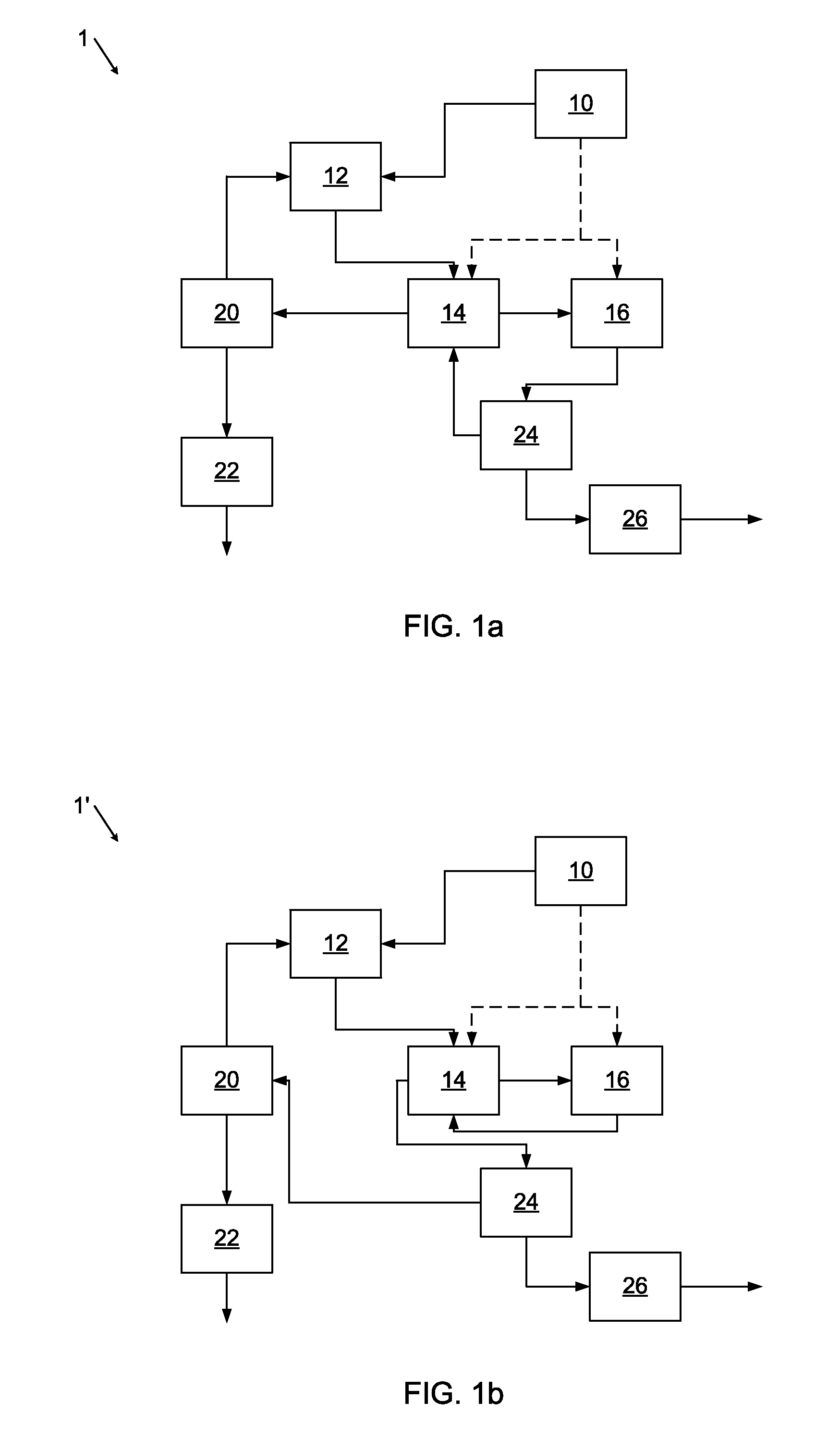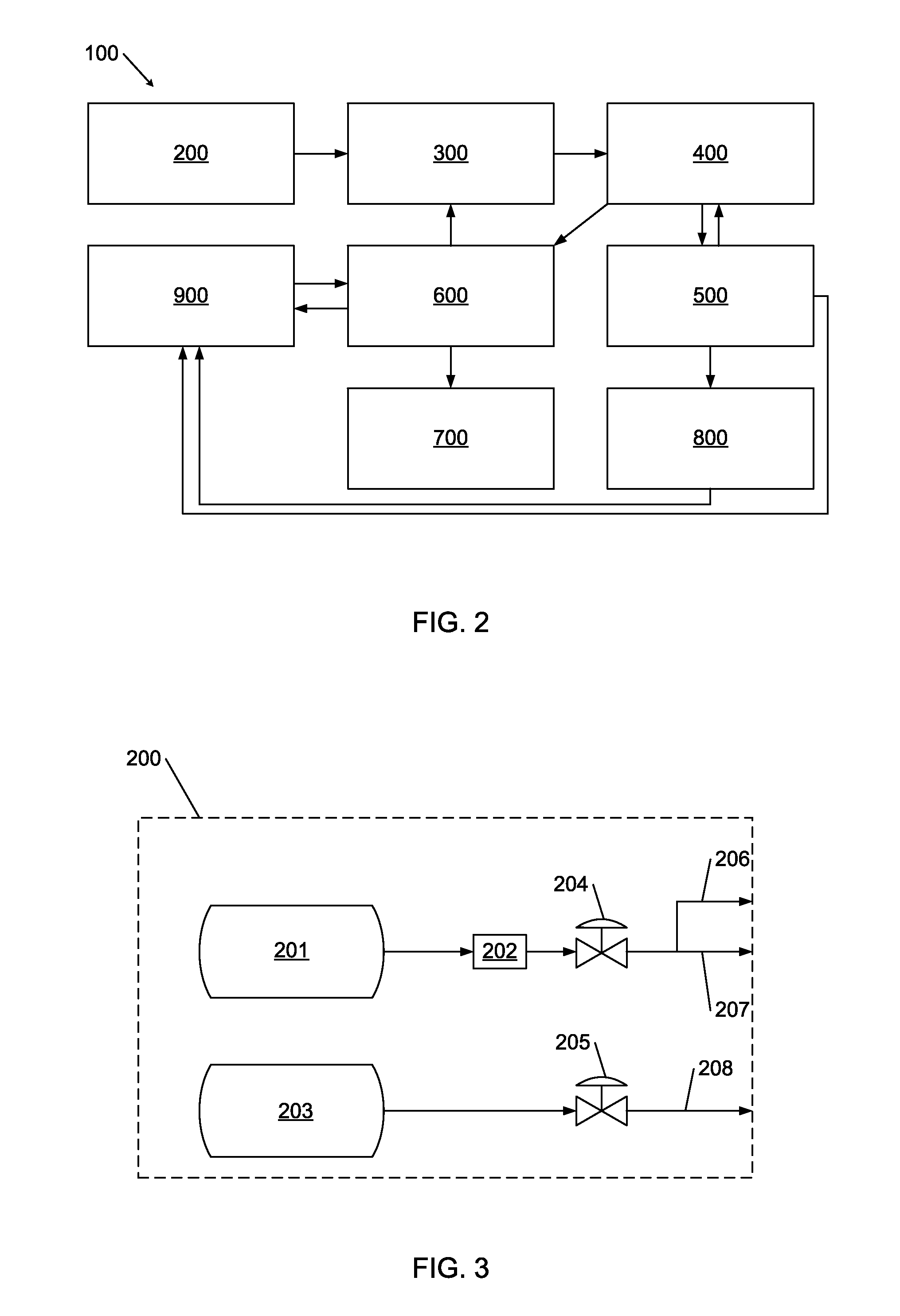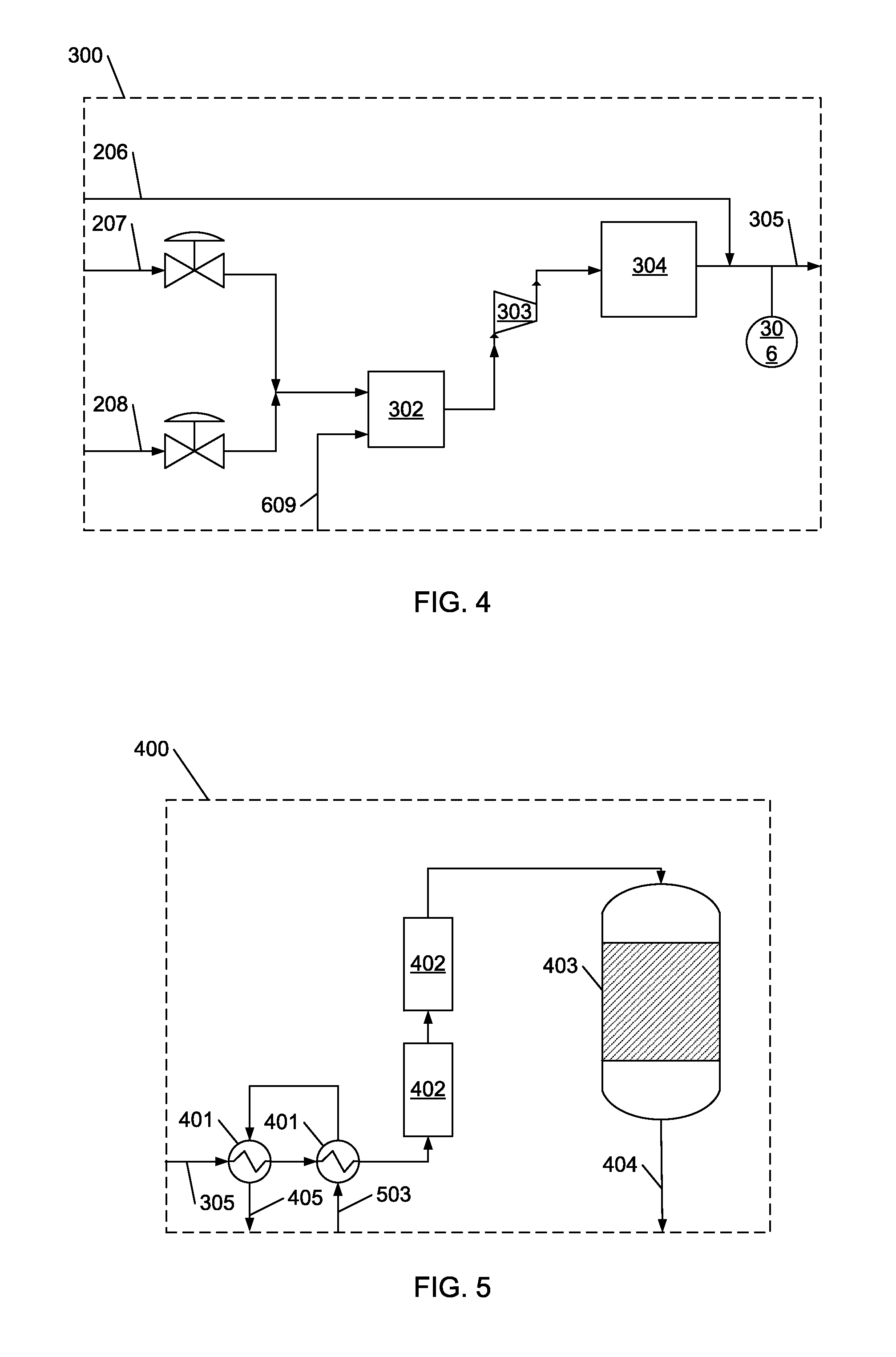Systems for producing solid carbon by reducing carbon oxides
a carbon oxide and carbon dioxide technology, applied in the field of systems and reactors, can solve the problems of cost, availability, and quality limit the wide industrial use of this material, and the carbon is one of the more expensive allotropes of carbon
- Summary
- Abstract
- Description
- Claims
- Application Information
AI Technical Summary
Benefits of technology
Problems solved by technology
Method used
Image
Examples
example 1
[0090]FIG. 2 depicts one embodiment of a system 100 for production of solid carbon products. Aspects of this embodiment are shown in further detail in FIGS. 3 through 10. The system 100 typically includes a gas supply subsystem 200, a gas handling subsystem 300, a reactor subsystem 400, a product separation subsystem 500, a water separation subsystem 600, a water treatment subsystem 700, a product packaging subsystem 800, and a utilities subsystem 900 (each shown in more detail in FIGS. 3 through 10). In FIGS. 2 through 10, solid arrows indicate the flow of materials (gas, liquid, etc.). In the system 100, information also flows within and between various subsystems. The subsystems may be modified or combined, or may be added to additional subsystems as fitting desired production processes. The subsystems may be positioned to improve operating economics and to make efficient use of space in a process facility. The subsystems may also include various instruments or equipment, such as...
example 2
[0103]FIG. 11 depicts another system 1100 for producing solid carbon products of various morphologies. The system 1100 includes a gas supply subsystem 1200, a gas handling subsystem 1300, a fluidized-bed reaction subsystem 1400, a product separation and packaging subsystem 1500, a water treatment subsystem 1600, and a venting subsystem 1700 (each shown in more detail in FIGS. 12 through 17). In the system 1100, solid arrows indicated the flow of materials (gas, liquid, etc.). In FIGS. 11 through 17, solid arrows indicate the flow of materials (gas, liquid, etc.). Information also flows within and between various subsystems. The subsystems may be modified or combined, or may be added to with additional subsystems as fitting desired production processes. The subsystems may be positioned to improve operating economics and to make efficient use of space in a process facility. The subsystems may also include various instruments or equipment, such as valves, transducers, flow meters, swit...
example 3
[0113]FIG. 18 depicts another system 1800 for producing solid carbon products of various morphologies. The system 1800 includes a gas supply subsystem 1900, a gas handling subsystem 2000, a reactor subsystem 2100, a product separation subsystem 2200, a water separation subsystem 2300, a water treatment subsystem 2400, a product packaging subsystem 2500, and a utilities subsystem 2600 (each shown in more detail in FIGS. 19 through 26). In FIGS. 18 through 26, solid arrows indicate the flow of materials (gas, liquid, etc.). Information also flows within and between various subsystems. The subsystems may be modified or combined, or may be added to with additional subsystems as fitting desired production processes. The subsystems may be positioned to improve operating economics and to make efficient use of space in a process facility. The subsystems may also include various instruments or equipment, such as valves, transducers, flow meters, switches, controllers, computers, etc. The gas...
PUM
| Property | Measurement | Unit |
|---|---|---|
| temperature | aaaaa | aaaaa |
| grain size | aaaaa | aaaaa |
| grain size | aaaaa | aaaaa |
Abstract
Description
Claims
Application Information
 Login to View More
Login to View More - R&D
- Intellectual Property
- Life Sciences
- Materials
- Tech Scout
- Unparalleled Data Quality
- Higher Quality Content
- 60% Fewer Hallucinations
Browse by: Latest US Patents, China's latest patents, Technical Efficacy Thesaurus, Application Domain, Technology Topic, Popular Technical Reports.
© 2025 PatSnap. All rights reserved.Legal|Privacy policy|Modern Slavery Act Transparency Statement|Sitemap|About US| Contact US: help@patsnap.com



